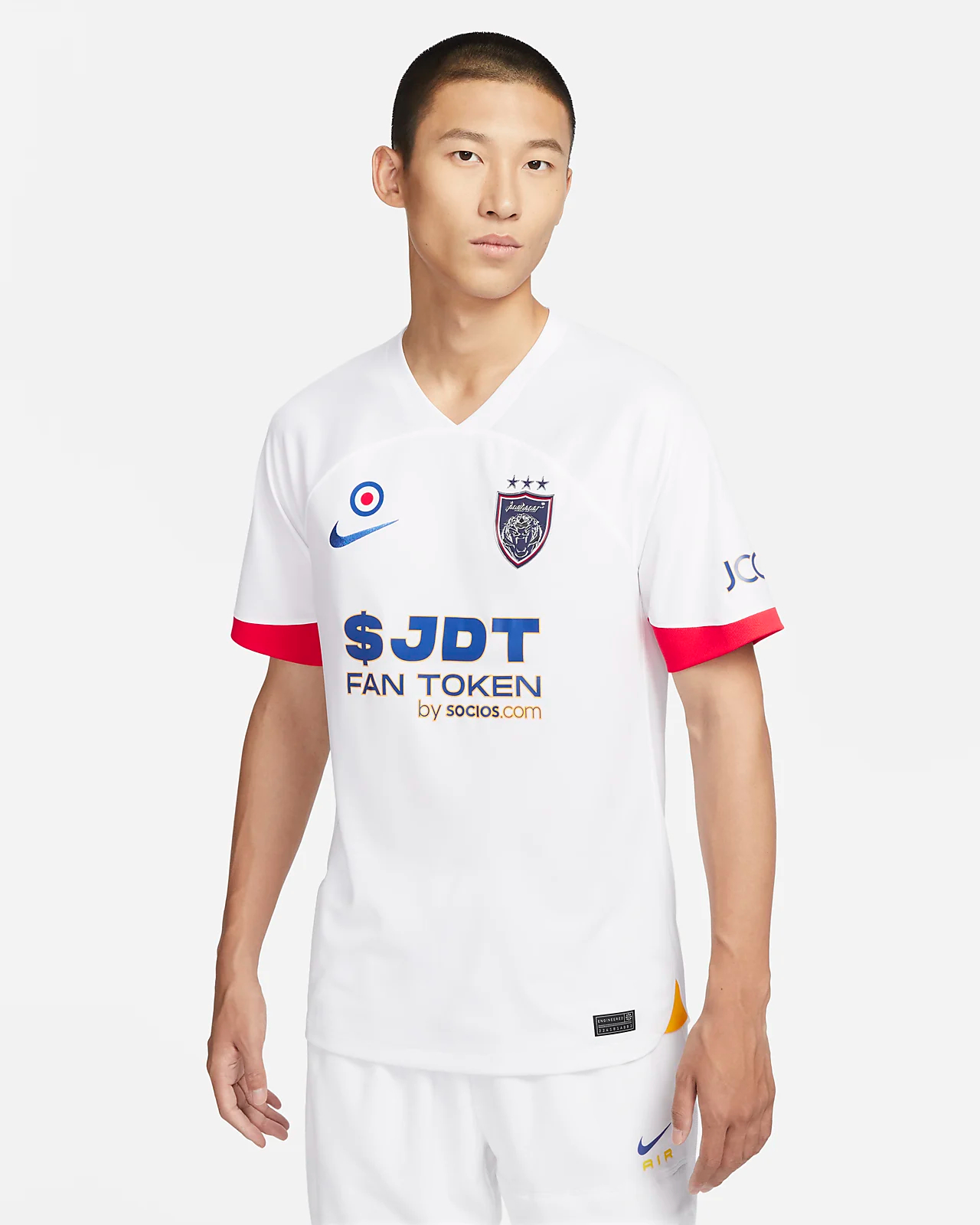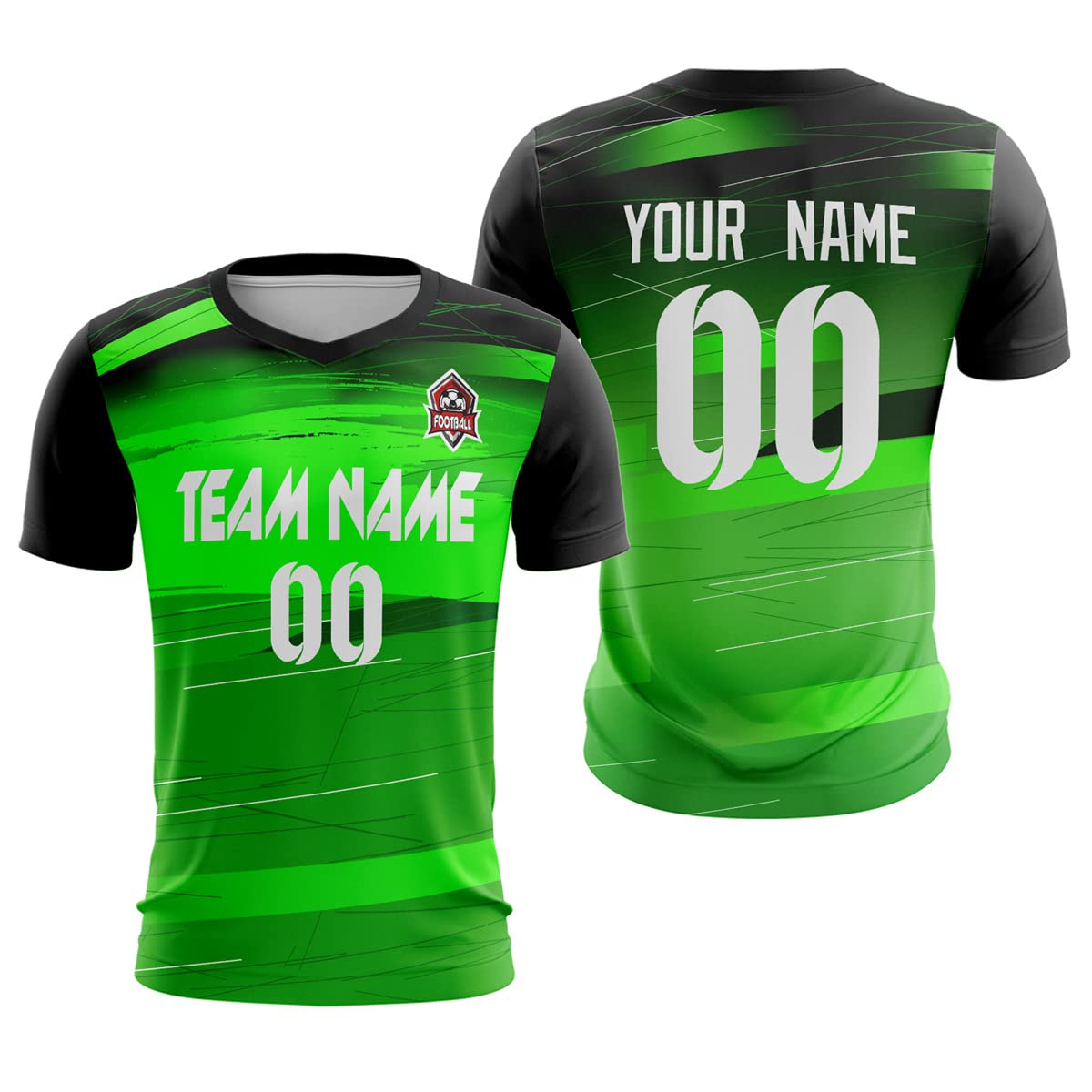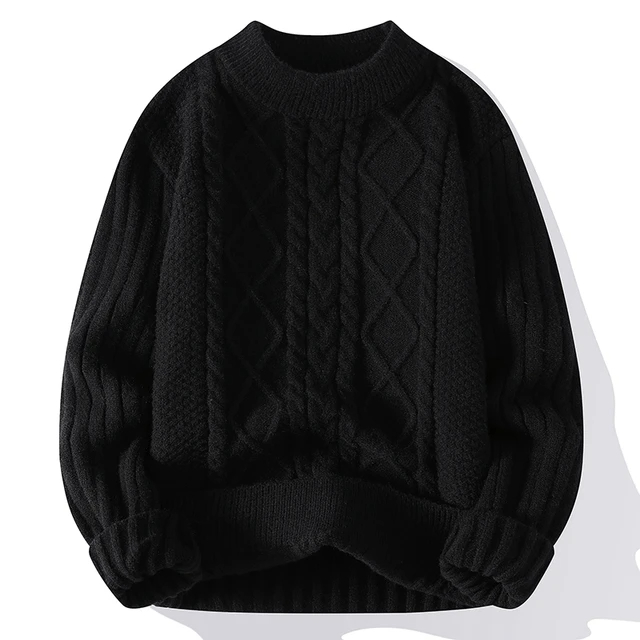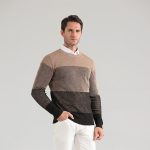How to wash soccer shirt? Football shirts, often made from synthetic materials like polyester or nylon, require special care due to their technical properties and the presence of printed or embroidered logos, numbers, and names. Proper cleaning helps maintain the shirt’s quality and appearance over time.

Pre-Cleaning Steps
- Remove any Large Debris: Shake the shirt vigorously to remove loose dirt, grass, and other particles.
- Separate Colours: Always separate light-coloured shirts from dark ones to avoid colour bleeding during washing.
- Fasten Closures and Buttons: Ensure zippers are closed, buttons are buttoned, and velcro patches are fastened to prevent snagging.
How to wash soccer shirt
Soccer shirts are more than just uniforms—they are engineered garments designed to enhance performance, regulate body temperature, and display team pride. Whether adorned with intricate embroidery, bold prints, or moisture-wicking technology, these shirts require special care to maintain their quality and functionality. Washing a soccer shirt improperly can lead to fading, damage to prints or logos, or diminished performance features. Below, we explore two primary methods for cleaning soccer shirts—hand washing and machine washing—along with essential tips to ensure your jersey stays in top condition.
Hand Washing: Ideal for Delicate Embroidery and Prints
For soccer shirts with delicate embellishments like embroidered logos, heat-pressed numbers, or intricate designs, hand washing is the safest option. This method minimizes friction and reduces the risk of damaging sensitive areas.
-
Prepare Your Cleaning Solution:
- Fill a basin or sink with cool water. Avoid hot water, as it can cause colors to fade or damage synthetic fibers.
- Add a small amount of mild detergent specifically formulated for sportswear or delicate fabrics. These detergents are free from harsh chemicals that could degrade moisture-wicking properties or harm prints.
-
Submerge and Agitate Gently:
- Place the soccer shirt in the water and gently agitate it by swishing it around with your hands. Focus on stained or soiled areas, such as the collar, sleeves, or front panel.
- Avoid scrubbing or rubbing too hard, especially on printed or embroidered sections, as this can cause peeling, cracking, or fading.
-
Rinse Thoroughly:
- Drain the soapy water and refill the basin with clean, cool water. Rinse the shirt thoroughly to remove all detergent residue. Repeat if necessary to ensure no soap remains, as leftover detergent can irritate the skin or affect fabric performance.
-
Dry Carefully:
- Gently squeeze out excess water without wringing or twisting the fabric, which can stretch or distort the shirt.
- Lay the shirt flat on a clean towel, reshape it to its original dimensions, and roll the towel to absorb additional moisture.
- Allow the shirt to air dry away from direct sunlight or heat sources, as prolonged exposure can cause colors to fade or synthetic fibers to weaken.
Machine Washing: Convenient and Effective
If your soccer shirt is made from durable synthetic materials and lacks delicate embellishments, machine washing is a convenient alternative. However, it’s crucial to take precautions to protect the garment during the process.
-
Use a Laundry Bag:
- Place the soccer shirt inside a mesh laundry bag to shield it from excessive friction and tangling with other items. This step is especially important for jerseys with printed numbers, logos, or sponsor decals.
-
Select the Right Cycle and Temperature:
- Choose a gentle or delicate cycle on your washing machine to minimize agitation.
- Set the water temperature to cold, as warm or hot water can cause colors to bleed, prints to peel, or synthetic fibers to lose elasticity.
-
Choose the Right Detergent:
- Use a detergent specifically designed for synthetics or sportswear. These products are formulated to clean effectively without compromising technical features like moisture-wicking or breathability.
- Avoid using fabric softeners, as they can clog the pores of synthetic fabrics, reducing their ability to wick sweat and regulate temperature.
-
Wash with Similar Items:
- Group your soccer shirt with other lightweight, colorfast garments to prevent abrasion or color transfer. Avoid washing it with heavy items like jeans, towels, or shoes, which can cause unnecessary wear.
-
Air Dry After Washing:
- Once the cycle is complete, remove the shirt promptly to prevent wrinkles or mildew.
- Lay it flat on a drying rack or hang it on a padded hanger to air dry. Avoid using a tumble dryer, as the heat can shrink the fabric, warp logos, or damage elastic components.
Drying Techniques
- Air Dry: Hang the shirt on a clothesline or lay it flat on a clean towel to air dry naturally. Direct sunlight should be avoided to prevent fading and heat damage to the fabric and prints.
- Low Heat Tumble Dry: Some football shirts may be tumble-dried on a low heat setting, but always check the manufacturer’s care label first.
Spot Cleaning
For stubborn stains, use a pre-treatment solution specifically designed for sports fabrics. Apply directly to the stain, let it sit for a few minutes, then proceed with washing as usual.
Special Considerations
- Embroidered Logos and Numbers: Gently rub around these areas while washing, not directly on them, to prevent thread loosening or damage.
- Printed Graphics: Be cautious when treating printed graphics; excessive scrubbing can cause peeling or cracking.

Maintenance and Storage
- Storage: Once fully dried, fold neatly or hang in a well-ventilated area. Avoid compression storage which could lead to creasing or distortion of designs.
- Ironing: Many football shirts should not be ironed directly. If necessary, use a cool iron and place a thin cloth between the iron and the shirt. Alternatively, steaming can help remove wrinkles without damaging the fabric.
Frequency of how to wash soccer shirt
How to wash a soccer jersey? The frequency of washing depends on usage. After each match or training session, assess the level of sweat and dirt before washing. Over-washing can also degrade the shirt’s performance characteristics.
Professional Cleaning
For high-end or cherished items, consider professional cleaning services that specialize in sports apparel. They have the expertise to handle delicate materials and intricate embellishments.
Prevention is Better Than Cure
Wearing an undershirt can reduce the amount of sweat absorbed by the outer shirt, thus prolonging its life. Additionally, immediate washing after use can prevent odour build-up and set-in stains.
Advantages of Men’s Football Shirts
In summary, maintaining a men’s football shirt involves careful consideration of the materials, design elements, and washing conditions. By following these detailed steps, you can ensure your football shirt retains its vibrant colors, intact logos, and optimal performance throughout its lifespan.
Men’s football shirts, more than just a piece of sporting attire, embody a multitude of functional and symbolic advantages that make them an essential component in the world of sports and fashion. Below is a comprehensive analysis highlighting their key attributes.

1. Performance Enhancement
Football shirts are crafted from high-performance materials like polyester blends or moisture-wicking fabrics that are designed to enhance player performance. These fabrics draw sweat away from the skin, keeping players dry and comfortable during intense physical activity. The breathability of these shirts allows for better body temperature regulation, preventing overheating and reducing fatigue.
2. Technical Design
Modern football shirts often feature ergonomic designs that provide a perfect fit and freedom of movement. Stretch panels and articulated sleeves allow for ease of motion without restriction, while the lightweight nature ensures minimal drag, thereby improving speed and agility on the pitch.
3. Team Identity and Unity
The primary advantage of a football shirt is its role in fostering team spirit and unity. Each jersey is adorned with the club or national team’s crest, colors, and sometimes individual player names and numbers, which serve as identifiers and symbols of collective pride. Wearing matching kits creates a sense of belonging and shared purpose among teammates.
4. Branding and Sponsorship
From a commercial perspective, football shirts act as mobile billboards. They display sponsor logos prominently, promoting brand visibility both on the field and through media coverage. This not only generates revenue for clubs but also raises brand awareness globally for the sponsors.
5. Fan Engagement and Memorabilia
For fans, owning and wearing their favorite team’s shirt serves as a tangible connection to the sport and the team they support. It’s a way to express fandom and show solidarity. Additionally, limited edition or match-worn jerseys become collectibles and hold sentimental value, contributing to the rich tapestry of football culture.
6. Style and Fashion Statement
Football shirts have transcended their original athletic function and entered mainstream fashion. They are now commonly worn as casual wear, reflecting personal style and often being reinterpreted by designers. The versatility of football shirts allows them to be paired with various outfits, bridging the gap between sportswear and streetwear.

7. Durability and Longevity
Manufacturers invest in durable materials and advanced stitching techniques to ensure football shirts withstand the rigors of the game. Reinforced seams, tough fabric blends, and colorfast dyes mean that quality shirts can endure frequent washing and rough play without losing their shape, color, or design integrity.
8. Innovation and Technology
Many football shirts incorporate cutting-edge technology such as integrated cooling systems, UV protection, and even wearable tech that tracks player data. These advancements not only improve player comfort and safety but also reflect the dynamic nature of the sport and its apparel.
9. Versatility for All Weather Conditions
High-quality football shirts are engineered to adapt to different weather conditions. Some shirts come with breathable meshes for hot climates, while others include thermal insulation properties for colder temperatures, ensuring players remain comfortable throughout the year.
10. Inclusivity and Representation
Football shirts today cater to a diverse fan base and athlete population. They come in a range of sizes, including those for children, women, and plus-sizes, making it possible for all supporters to proudly represent their teams. Moreover, they are often released in special editions celebrating cultural events or social causes, thus serving as a platform for wider societal engagement.
When Tumble Drying Is Necessary
There may be situations where tumble drying your football shirts cannot be avoided. For instance, you might need the shirt to be ready for a game the same day. If tumble drying is necessary, make sure the shirt is turned inside out to protect the printed numbers and logos. Always select the lowest heat setting to minimize the risk of heat damage. Consider using dryer balls to help improve airflow and reduce drying time, which can also contribute to less potential harm to the shirt.
Monitor the drying process closely; do not leave the shirt in the dryer longer than needed. Remove the shirt promptly to prevent wrinkles and additional wear from prolonged tumbling. If the shirt is somewhat damp when removed, lay it flat to complete the air-drying process. Using this level of care when tumble drying ensures that, when necessary, it can be done with minimal risk to your football shirts.
The Impact of Repeated Washing and Drying
Over time, the repeated washing and drying of football shirts can have a cumulative effect on their appearance and integrity. Each cycle, especially in a machine, can put stress on the fibers and printings, potentially leading to the shirt losing its original fit, color, or detailing. Minimizing the number of washes by spot-cleaning when possible can help extend the life of your shirts.
Consideration should also be given to the frequency of washing. Avoid washing football shirts after every single wear if they’re not significantly dirty. This reduces the amount of stress placed on the material and can extend the vibrancy of the colors and the adherence of any printed or heat-transferred decorations. By being mindful of the wear conditions and not overwashing, you can preserve the quality of your football shirts for game day and beyond.
Choosing the Right Laundry Products
When it comes to caring for your football shirts, selecting the right laundry products is just as important as choosing the correct washing method. These jerseys are often made from advanced synthetic materials designed to enhance performance, regulate body temperature, and display vibrant team colors or intricate designs. Using inappropriate products can compromise their functionality and appearance, leading to fading, damage, or diminished moisture-wicking properties. By opting for suitable detergents, avoiding harmful chemicals, and pre-treating stains effectively, you can ensure your football shirts remain in excellent condition for years to come.
Avoid Harsh Chemicals: Preserve Fabric Integrity
- No Bleach:
Bleach is a powerful chemical that can strip colors, weaken synthetic fibers, and cause irreversible damage to delicate prints or embroidery. Even “color-safe” bleach can degrade the fabric over time, making it brittle and prone to tearing. Always avoid using bleach when washing your football shirts. - Skip Fabric Softeners:
While fabric softeners may seem like a good idea for keeping clothes feeling soft, they are detrimental to technical fabrics like those used in football shirts. Fabric softeners leave behind a residue that clogs the pores of moisture-wicking materials, reducing their ability to regulate sweat and maintain breathability. Instead of softening the fabric, they hinder its performance, leaving your shirt less effective during physical activity. - Opt for Mild Detergents:
Choose detergents specifically formulated for synthetic fabrics or sportswear. These products are free from harsh chemicals and are designed to clean effectively without damaging the fabric’s technical properties. Look for detergents labeled as “gentle,” “moisture-wicking safe,” or “suitable for activewear.” Brands like Win Sports Detergent, Tide Free & Gentle, or Nikwax Tech Wash are excellent options for cleaning football shirts.
Wash with Similar Colors: Prevent Color Bleeding
Football shirts often feature bold, vibrant colors and intricate designs that can be susceptible to fading or bleeding if not washed properly. To preserve their aesthetic appeal:
- Separate by Color:
Sort your football shirts into groups based on color—whites, lights, and darks—to prevent color transfer during the wash cycle. If your shirt has multi-colored elements, treat it as a “dark” to avoid any risk of bleeding onto lighter areas. - Use Cold Water:
Washing in cold water minimizes the risk of color fading and prevents dyes from bleeding onto other garments. This is especially important for jerseys with printed logos, numbers, or sponsor decals, which can lose vibrancy if exposed to warm or hot water.
Pre-Treat Stains: Minimize Aggressive Washing
Pre-treating stains before washing is an effective way to reduce the need for aggressive wash settings, which can harm delicate fabrics. Follow these steps to safely address stains:
- Identify the Stain Type:
Common stains on football shirts include grass, mud, sweat, oil-based substances (like sunscreen), or food spills. Each type requires a tailored approach for removal. - Use Safe Stain Removers:
- For general stains, apply a small amount of mild detergent directly to the affected area and gently rub it in with your fingers or a soft-bristled brush. Let it sit for 5–10 minutes before washing.
- For grass or dirt stains, create a paste using baking soda and water or use a specialized stain remover safe for synthetics. Gently dab the area without scrubbing too hard.
- For oil-based stains, sprinkle cornstarch or talcum powder on the spot to absorb excess grease. After letting it sit for a few minutes, brush it off and dab the area with a mixture of dish soap and water.
- Follow Instructions Carefully:
Always read the label on your stain remover to ensure it’s safe for use on synthetic fabrics. Avoid products containing bleach or harsh solvents, as these can damage the material or cause colors to fade.
Benefits of Proper Product Selection and Pre-Treatment
By choosing the right laundry products and pre-treating stains effectively, you can significantly extend the life of your football shirts while maintaining their structural and aesthetic qualities:
- Preserve Moisture-Wicking Properties:
Using mild detergents and avoiding fabric softeners ensures that the technical features of your shirt remain intact, allowing it to perform optimally during games or training sessions. - Maintain Vibrant Colors:
Cold water, color-safe detergents, and proper sorting prevent colors from fading or bleeding, keeping your shirt looking fresh and professional. - Protect Prints and Embellishments:
Gentle handling and safe stain removers minimize the risk of peeling, cracking, or fading on printed logos, numbers, or sponsor decals. - Reduce Wear and Tear:
Pre-treating stains reduces the need for aggressive wash cycles, which can stretch, distort, or damage the fabric over time.
Caring for your football shirts goes beyond simply tossing them into the washing machine. Selecting the right laundry products and adopting proactive measures like stain pre-treatment play a crucial role in preserving both the performance and appearance of these specialized garments. By avoiding harsh chemicals, using mild detergents, and washing with care, you can ensure your jersey remains a reliable and stylish companion for every match, practice, or fan event. Treat your football shirt with the attention it deserves, and it will continue to represent your team pride and passion for the game in the best possible way.
Best Practices for Longevity
Consistent care and proper drying of your football shirts are critical to keeping them in prime condition. Tumble drying should always be the last resort, used sparingly and with the utmost care. Remember to consult care labels and follow specific instructions related to your garment. Air drying is the preferred method whenever possible, and when washing, choose the right detergents and treat stains appropriately.
By adopting these best practices, you are not only preserving the quality of your football shirts but also ensuring they’re ready for performance and fandom wear. Whether you are a player on the field or a fan in the stands, taking care of your football shirts will keep the spirit of the game alive in the colors you wear with pride.

Advantages of soccer shirts
Soccer shirts, also known as jerseys, are more than just uniforms worn by players on the field. They represent a critical component of soccer culture, embodying both functionality and symbolism. These garments are designed with precision to enhance athletic performance while simultaneously serving as a canvas for team identity and fan connection. From professional leagues to amateur clubs, soccer shirts play an essential role in defining the sport’s aesthetic and emotional appeal.
Functional Advantages of Soccer Shirts:
The functional design of soccer shirts is meticulously tailored to optimize athletic performance, addressing the specific needs of players engaged in high-intensity physical activity. One of the most significant advantages lies in the use of lightweight and breathable materials, which are fundamental to maintaining comfort and agility on the field. Modern soccer jerseys are predominantly made from advanced synthetic fabrics such as polyester blends, engineered to minimize weight while maximizing airflow. These materials allow players to move freely without feeling restricted by bulky or heavy clothing, enabling them to execute quick sprints, sharp turns, and intricate maneuvers with ease.



